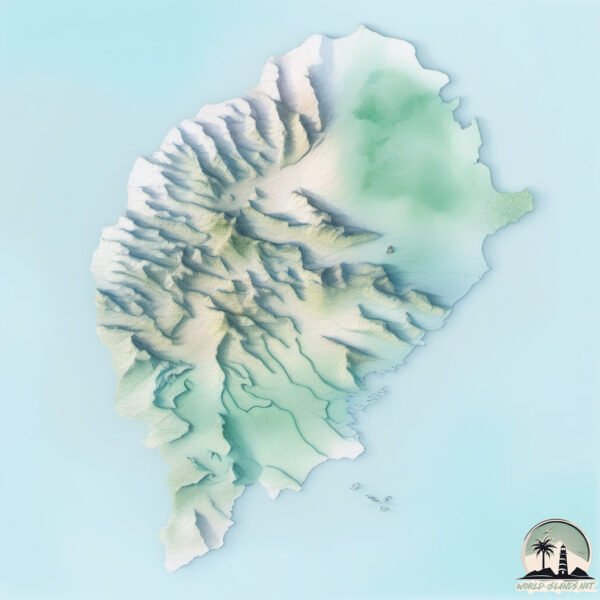Welcome to Sao Tome , a Tropical island in the Gulf of Guinea, part of the majestic Atlantic Ocean. This guide offers a comprehensive overview of what makes Sao Tome unique – from its geography and climate to its population, infrastructure, and beyond. Dive into the details:
Geography and size of Sao Tome
Size: 853.1 km²Coastline: 164.7 kmOcean: Atlantic OceanSea: Gulf of GuineaContinent: Africa
Sao Tome is a Large Island spanning 853 km² with a coastline of 165 km.
Archipel: Cameroon Island Chain – A less-known archipelago off the coast of Cameroon, characterized by its biodiversity and cultural richness.
Tectonic Plate: Africa – One of the world’s largest tectonic plates, covering the African continent and parts of the surrounding oceans, known for its stability with some active rift zones.
The geographic heart of the island is pinpointed at these coordinates:
Climate and weather of Sao Tome
Climate Zone: TropicalClimate Details: Tropical Savanna, WetTemperature: Hot
Climate Characteristics: Defined by distinct wet and dry seasons with high temperatures year-round. Pronounced rainfall occurs during the wet season, while the dry season is marked by drought.
Topography and nature of Sao Tome
Timezone: UTC±00:00Timezone places: Europe/LisbonMax. Elevation: 2024 m Pico de São ToméMean Elevation: 351 mVegetation: Evergreen Broadleaf ForestTree Coverage: 53%
The mean elevation is 351 m. Dominating the island’s landscape, the majestic “Pico de São Tomé” rises as the highest peak, soaring to impressive heights. The island is characterized by Mountains: High, steeply elevated landforms. Characterized by both a high maximum elevation (over 500 meters) and a high mean elevation, creating rugged, mountainous terrains on islands.
Dominating Vegetation: Evergreen Broadleaf Forest
Vegetation: 13 vegetation zones – Exceptionally Diverse Island
Infrastructure and Travelling to Sao Tome
Does the island have a public airport? yes .
Does the island have a major port? no .
The mean population of Sao Tome is 247 per km². Sao Tome is Moderately Inhabited. The island belongs to São Tomé and Principe .
The name of the island resonates across different cultures and languages. Here is how it is known around the world: Arabic: جزيرة ساو تومي; German: São Tomé; Spanish: Isla de Santo Tomé; French: São Tomé; Portuguese: Ilha de São Tomé; Russian: Сан-Томе; Chinese: 圣多美岛
Continuing your journey, Principe is the next notable island, situated merely km away.
Why NO ONE Visits This African Country - São Tomé and Príncipe
Why NO ONE Visits This African Country - São Tomé and Príncipe.
Why NO ONE Visits This African Country - São Tomé and Príncipe
Why NO ONE Visits This African Country - São Tomé and Príncipe.
Why NO ONE Visits This African Country - São Tomé and Príncipe.
Top 10 Places To Visit in Sao Tome and Principe - Travel Video
Exploring Sao Tome and Principe is a unique and unforgettable ...
Exploring Sao Tome and Principe is a unique and unforgettable experience. From the vibrant cities to the stunning national parks, ...
Sao Tome and Principe: The Islands in the Middle of the World
Positioned just off Gabon's coast and secluded from the rest of the ...
Positioned just off Gabon's coast and secluded from the rest of the globe, this stands as one of Africa's tiniest nations. Its populace ...
São Tomé and Principe is classified as Least developed region: Countries that exhibit the lowest indicators of socioeconomic development, with the lowest Human Development Index ratings. The level of income is Lower middle income.
News – Latest Updates and Headlines from Sao Tome
Stay informed with the most recent news and important headlines from Sao Tome. Here’s a roundup of the latest developments.
Loading...
Please note: The data used here has been primarily extracted from satellite readings. Deviations from exact values may occur, particularly regarding the height of elevations and population density. Land area and coastline measurements refer to average values at mean high tide.

